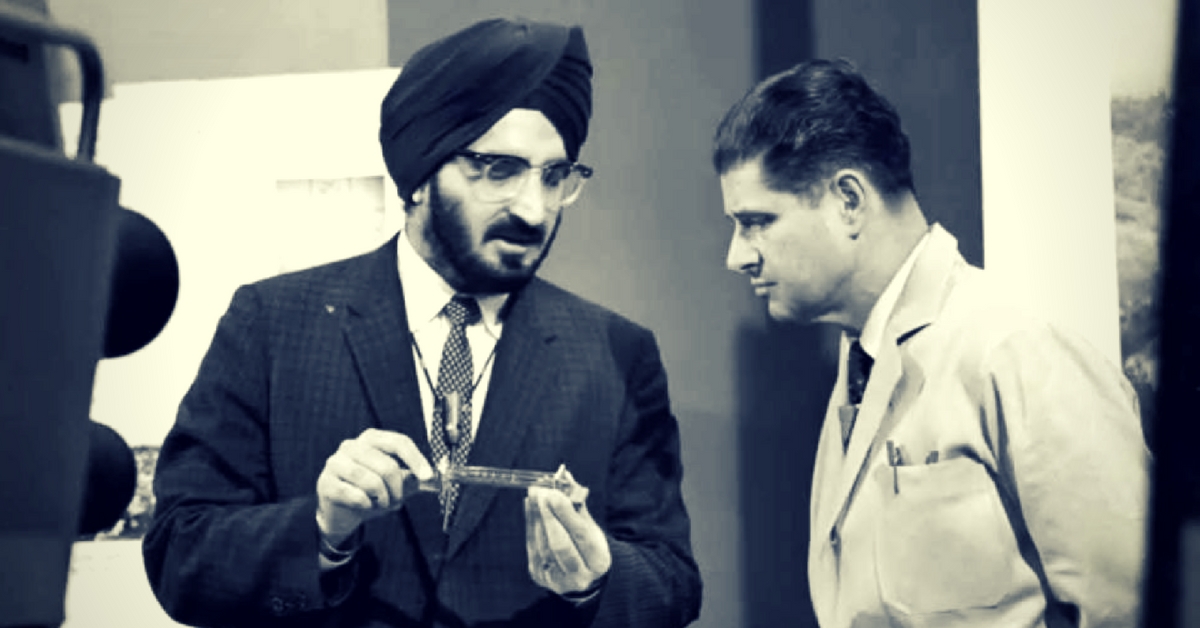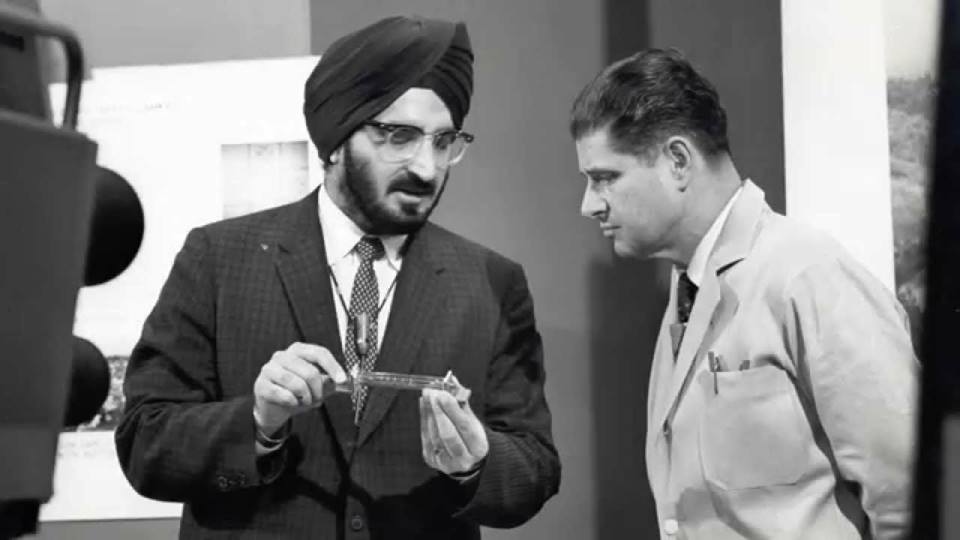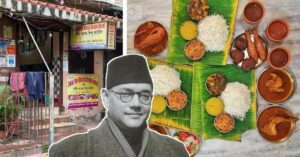Ignored For the Nobel Prize, This Unsung Scientist Is The Father Of Fibre Optics!
High-speed internet and endoscopy? This scientific pioneer made them possible!

Charles Kuen Kao, a Shanghai-born scientist, was awarded one-half of the 2009 Nobel Prize in Physics for his trailblazing work in the field of fibre-optics communication.
“In 1966, Charles K. Kao made a discovery that led to a breakthrough in fibre optics. He carefully calculated how to transmit light over long distances via optical glass fibres. With a fibre of purest glass, it would be possible to transmit light signals over 100 kilometres, compared to only 20 meters for the fibres available in the 1960s,” says the citation to his 2009 Nobel Prize award.
This remarkable revelation laid the groundwork for high-speed broadband internet that allows unfathomable volumes of text, image and video data to be transmitted around the globe in an instant.
Turn back the clock nearly 12 years and it was an Indian scientist by the name of Narinder Singh Kapany who had demonstrated for the first time the transmission of images over a bundle of optic fibres.
India’s contribution to modern science is often overlooked by the rest of the world. Jagdish Chandra Bose, Satyendranath Bose, CV Raman, Homi Bhabha, Janaki Ammal, Meghnad Saha, and GN Ramachandran are among the many Indian luminaries who have played their role in spreading the gospel of modern science but haven’t received due credit.
How many of us are aware of Dr Narinder Singh Kapany, who is considered by many as the “Father of Fibre Optics”? It’s safe to say not many. However, it was his path-breaking research in the 1950s on fibre optics, which paved the way for high-speed broadband internet, laser surgeries and endoscopy, among others.

Born in 1927 to a Sikh family in Moga, Punjab, Kapany studied at Agra University. “When I first started work in technology, it was in India at an ordnance factory learning how to design and manufacture optical instruments. Then I came to the Imperial College in London (1952) primarily to learn about technology at the next level. After that I was supposed to go back to India and start my own company,” Kapany says in this interview.
In a 2003 book titled “Sand to Silicon: The Amazing Story of Digital Technology,” author Shivanand Kanavi details the contribution of Kao and Kapany in the field of fibre optics. Speaking to the author, Kapany talks about how he got interested in the field of optics.
“When I was a high school student at Dehradun in the beautiful foothills of the Himalayas, it occurred to me that light need not travel in a straight line, that it could be bent. I carried the idea to college,” Kapany said.
It was during his PhD at the Imperial College in 1954 when he first managed to transmit images over a bundle of optic fibres.
“However, when I went to London to study at the Imperial College and started working on my thesis, my advisor, Dr Hopkins, suggested that I try glass cylinders instead of prisms. So, I thought of a bundle of thin glass fibres, which could be bent easily. Initially, my primary interest was to use them in medical instruments for looking inside the human body. The broad potential of optic fibres did not dawn on me till 1955. It was then that I coined the term fibre optic,” Kapany tells Kanavi. Other sources, however, point out that he coined the term “fibre optics” in an article published for the famed Scientific American publication in 1960. Irrespective, this was all before Charles K Kao made any significant inroads.

Before he finished his course in the Imperial College, he received a scholarship from the Royal Society to pursue further research in fibre optics. “I worked for a year and a half on trying to make glass fibres and align them in a way to show that they can transmit light and images together,” says Kapany in an interview.
Recognising the nature of his work, Harold Hopkins, Kapany’s professor encouraged him to do a PhD in optics, but his heart was still set on coming back to India after completing his PhD in 1955 and setting up his own venture. In fact, India’s first Prime Minister Jawaharlal Nehru, a tremendous votary modern science, wanted Kapany to work for the Indian government as a Scientific Advisor to the Ministry of Defence.
However, a meeting with an American professor at a science conference in Italy (1954), where he presented the very first publication on fibre optics, altered the course of his life, and eventually, he joined the University of Rochester as a faculty member. “One year led to another which led to a job which immediately got me into entrepreneurship and instead of starting a company in India, I ended up starting my first company in this area in Palo Alto (Silicon Valley). Started in 1960, I took it public in 1967,” he adds.
When the Nobel Committee awarded the 2009 Prize to Kao, many in the scientific community were perplexed that Kapany was overlooked for the award. In fact, the Nobel Committee had even acknowledged Kapany’s work in a detailed publication. The man himself, however, wasn’t too perturbed by this oversight. Speaking to India Today in 1999, Kapany expressed his sentiments.

“What can you say about this. It is known that Prof Kao started work in this field many years after me. He faced competition too. I don’t think there should be any controversy about it. It is up to the Swedish Academy to decide. They have used whatever criteria they wanted to use.” he said.
His contributions, however, have been recognised by the Massachusetts Institute of Technology (MIT), which acknowledges him as the inventor of fibre optics. Even the noted Fortune Magazine in 1999 listed him as one of the seven “unsung heroes” whose contributions radically changed the global business landscape. He went onto become a successful businessman, blazing his way through the tech revolution in Silicon Valley. Currently, in his 90s, he has over 100 patents to his name and runs a philanthropic organisation called the Sikh Foundation, which seeks to better relations between the Sikh community and others in the US.
Read also: How a Sea Journey By CV Raman Placed India On The Global Science Map
“In any discovery or invention, many people play a role, and it would be wrong to say only one person did all the work. However, some people play a crucial role and show the way for further research. In the case of fibre optics, Kapany played such a critical role. There were others who had realised that glass cylinders or fibres could be used to transmit light, but Kapany was more successful than anybody else in solving the problems involved and scientifically demonstrating the same,” Kanavi says in his book.

Despite Kapany’s work, the loss of signal over long distances via optical glass fibre was a recurring problem. What Kao did was work out how to fix this problem, and calculate how to transmit light over long distances. It was his work which led to the fabrication of the first ultrapure fibre in 1970. This was a game-changer in modern communication systems.
Having said that, many feel that Kapany should have shared the Nobel Prize with Kao, considering his pioneering work in the ’50s. However, the trailblazing Sikh doesn’t seem to mind.
Like this story? Or have something to share? Write to us: [email protected], or connect with us on Facebook and Twitter.
NEW: Click here to get positive news on WhatsApp!

Similar Story

Netaji Bose’s Favourite Eatery Has Been Serving Traditional Delicacies for Over 100 Years
The Swadhin Bharat Hindu Hotel in Kolkata, started by Mangobindo Panda, is a century-old pice hotel where Indian freedom fighters like Netaji Subhas Chandra Bose would enjoy Bengali delicacies.
Read more >
If you found our stories insightful, informative, or even just enjoyable, we invite you to consider making a voluntary payment to support the work we do at The Better India. Your contribution helps us continue producing quality content that educates, inspires, and drives positive change.
Choose one of the payment options below for your contribution-
By paying for the stories you value, you directly contribute to sustaining our efforts focused on making a difference in the world. Together, let's ensure that impactful stories continue to be told and shared, enriching lives and communities alike.
Thank you for your support. Here are some frequently asked questions you might find helpful to know why you are contributing?


This story made me
-
97
-
121
-
89
-
167












